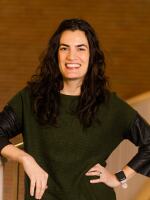For many around Ohio, life is beginning to resemble what it was pre-pandemic, with some returning to places like the office or the classroom. As Ohioans venture out more for both work and play, the Cleveland Clinic is sharing a matrix to help people assess the risk of contracting the virus when participating in any one activity.
Associate Chief of Safety and Quality Aaron Hamilton joined Gov. Mike DeWine's Tuesday coronavirus briefing to explain how that matrix works.
He says the framework of the "Safe At Home" guidance (PDF) is really about three things: time, space and people.
"The time part is really about, time – how much time are you going to spend on that activity?" Hamilton explained. "And in that same time dimension, I'd think about how frequently you're going to be doing that activity. So, it's both the duration of that time and the frequency."
Next is space. Consider, is this an indoor or outdoor activity? Will you have the ability to socially distance? "How can you spread out – or not – needs to be taken into consideration," he noted.
Lastly – people – was something Hamilton said folks don't think a lot about.
"I urge families and folks to consider, how well do you know the people that you're going to be interacting with, and how well do you know that they're adhering to the safe guidelines that we put out there?" he advised.
Those guidelines include the oft-repeated recommendations of frequent handwashing, masking and maintaining a physical distance of six feet.
He acknowledged that different scenarios can get complex quickly, such as getting together with friends and family. "It's important to understand what our friends and families are doing – if they're wearing masks; if they're appropriately social distancing – and we have to use that and incorporate that and decide, maybe it's better to do a Zoom visit or a FaceTime call with family this week, as opposed to getting together in person."
Hamilton said he and his family never leave home without their masks.
"One of the things I think about, and we all should think about, is approaching the pandemic with empathy, and understanding that we have to continue to live and make choices that we feel good about, and are mindful of our fellow citizens," he said.
The "Safe At Home" matrix, he added, "is the best way for us to continue to take on the pandemic and keep our numbers down."
Over the last two weeks, Ohio's numbers continued their downward trend, though spread continues in Ohio's more rural counties, such as Putnam and Butler. Increases can also be seen in Franklin and Montgomery counties, which DeWine attributed to students returning to The Ohio State University and the University of Dayton, respectively.



